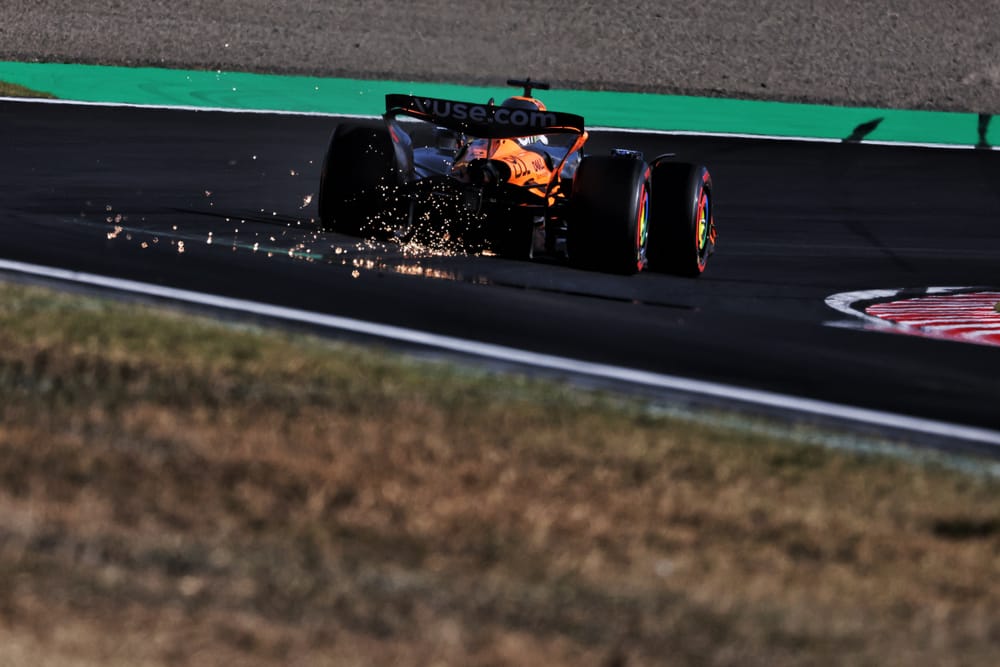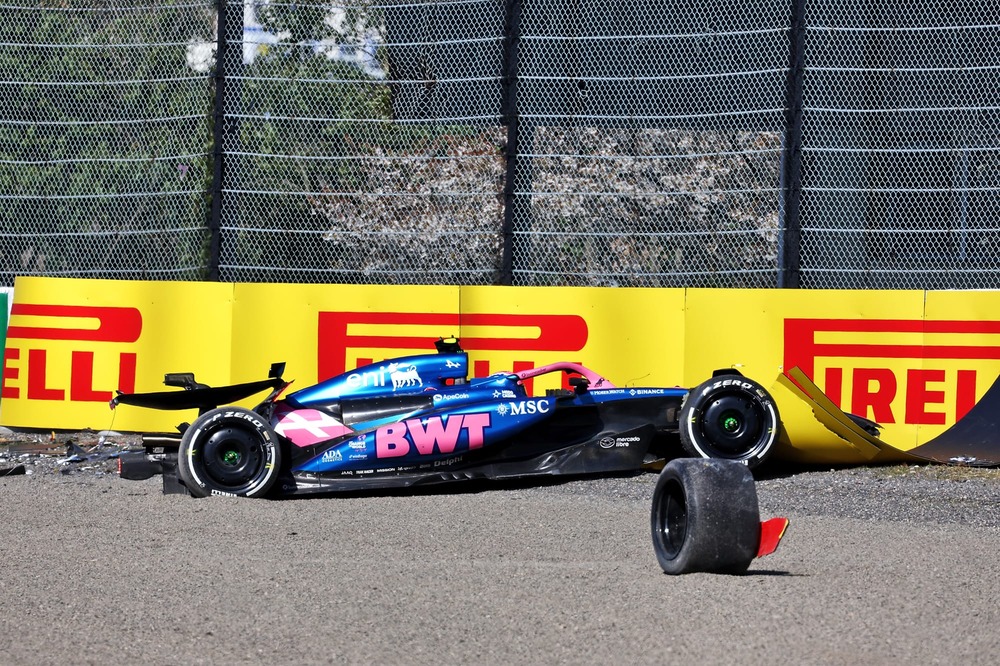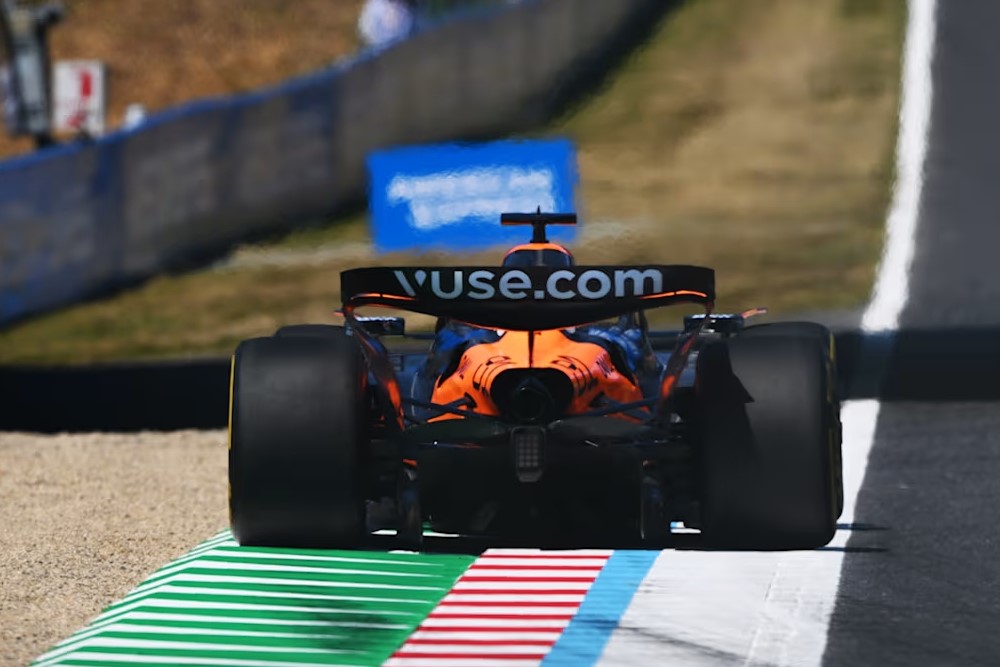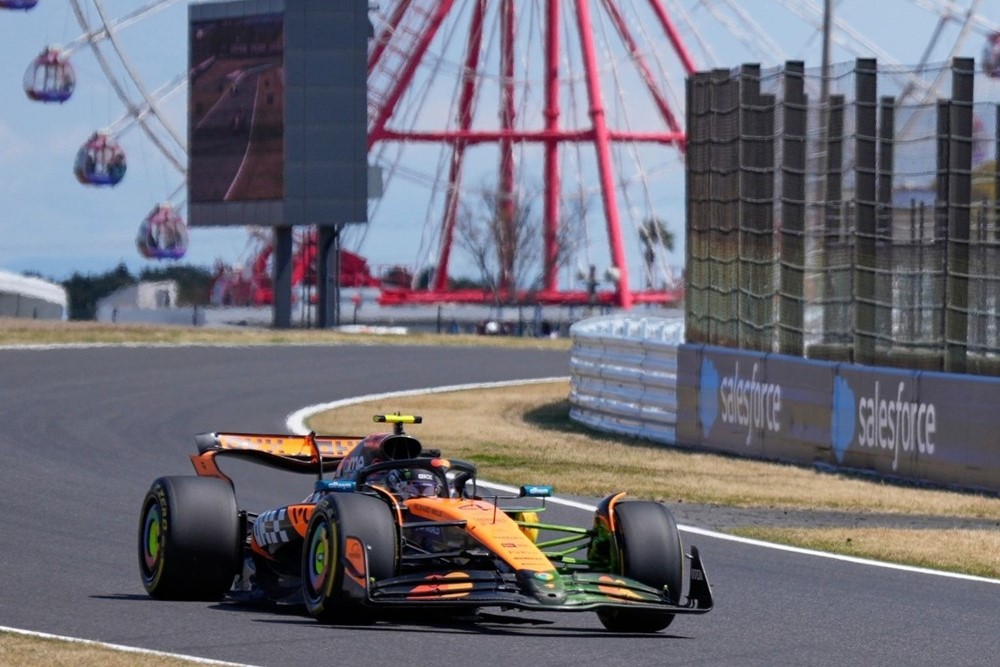The FIA has implemented immediate measures to curb Suzuka grass fires while ensuring safety and continuity of this weekend’s Japanese Grand Prix as they continue investigations.
The 2025 Formula 1 Japanese Grand Prix at Suzuka Circuit has been thrust into the spotlight for reasons far removed from the usual high-speed drama.
The changes come after Friday’s second free practice session (FP2) was notably disrupted by a series of grass fires, an unusual and alarming development that led to two red flags and significant interruptions for teams and drivers.
The Suzuka grass fires which broke out along the dry grassy areas near Turn 8 were reportedly ignited by sparks emanating from titanium skid blocks under Formula 1 cars.
While sparks are a common spectacle as cars scrape against the track surface, the sun-dried grass that lines sections of the Suzuka Circuit served as a perfect source of triggering a fire.
The first fire happened with just over 13 minutes remaining in FP2 and was quickly extinguished by marshals stationed around the track. However, a second and more dramatic blaze erupted toward the end of the session, prematurely halting proceedings and denying drivers crucial time to fine-tune their setups.
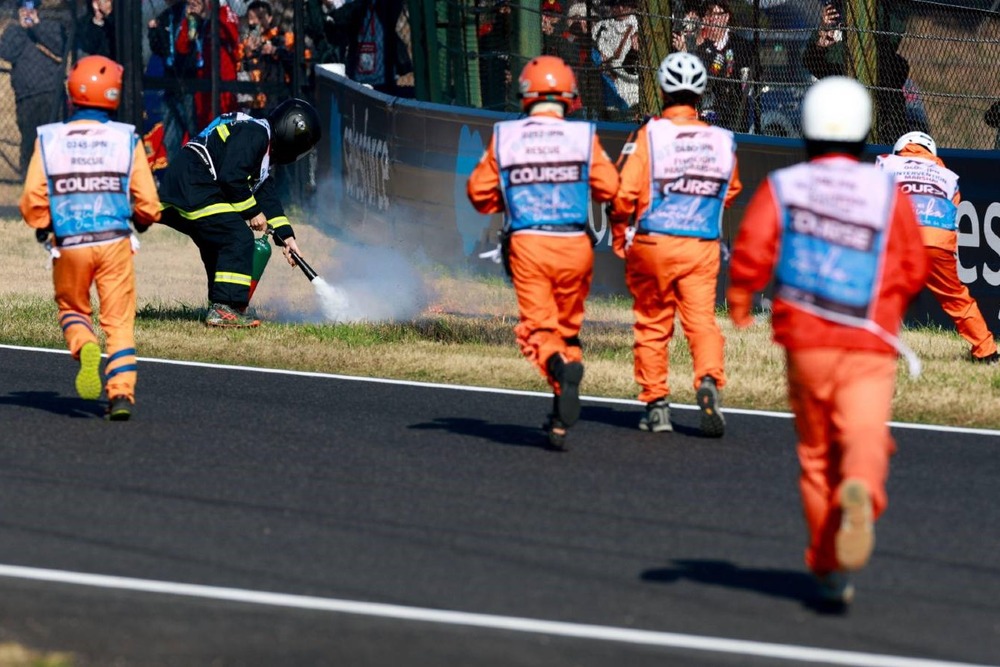
The second practice for the 2025 Japanese Grand Prix had already been marred by two other red flags caused by separate incidents involving Jack Doohan and Fernando Alonso.
Doohan suffered a high-speed crash into Turn 1 barriers, while Alonso beached his car in a gravel trap shortly after.
These disruptions, compounded by the grass fires, saw the session contend with only 20 minutes of track action during what was supposed to be a 60-minute session, leaving teams scrambling to gather data for qualifying and race strategies.
FIA investigates Suzuka grass fires
In response to the unprecedented Suzuka grass fires, the FIA has acted swiftly to mitigate further risks. In an official statement the governing body outlined several preemptive measures aimed at preventing a recurrence of such incidents during Saturday’s FP3 and qualifying sessions.
The measures include cutting grass to its shortest possible length, removing loose dried grass from affected areas, and dampening grassy patches around the circuit before competitive sessions resume.
“While we continue to look into the Suzuka grass fires that occurred during FP2, our focus before tomorrow will be on taking pre-emptive measures,” FIA statement read as per Motorsport.com.
“The grass has been cut as short as possible, and loose, dried grass has been removed from affected areas. Prior to tomorrow’s sessions, the grass will be dampened, and specific response teams will be stationed around the track.”
RELATED:
- Piastri tops disrupted Japanese GP second practice as Alonso, Doohan crash
- Video: Jack Doohan’s Suzuka crash as Alpine reveals the cause
- 2025 Japanese Grand Prix FP2 Results
Additionally, specialized response teams have been strategically positioned around the track to address any potential flare-ups swiftly.
The warm and dry weather conditions typical of Japanese spring have been identified as contributing factors to the unusual situation. While temperatures at Suzuka this weekend are not particularly high, the lack of rainfall has left grassy areas parched and highly flammable.

Although rain is forecast for Sunday afternoon, potentially reducing fire risks during the race itself, the FIA is leaving nothing to chance in its efforts to ensure safety.
This is not the first time Formula 1 is having to deal with Suzuka grass fires. A similar incident happened during last year’s Chinese Grand Prix at Shanghai International Circuit when grass fires disrupted practice sessions.
In that case, investigations suggested that subterranean gases might have exacerbated the flames. However, no such geological factors are believed to be at play at Suzuka where dry weather remains the primary concern.
The disruptions caused by Friday’s incidents at the Japanese Grand Prix have drawn mixed reactions from drivers and teams. While some expressed frustration over lost track time crucial for setup optimization, others acknowledged the FIA’s proactive approach in addressing safety concerns.
Verstappen told the media: “Of course, it was quite chaotic out there for everyone with the red flags, so like everyone else, we couldn’t complete all of the things that we wanted to do.
“Today has been quite difficult for me because I’ve been trying a lot of different things with the car but it seems like a lot of things are not really clicking at the moment, and it’s quite difficult just to put the lap down.”
Suzuka Circuit is known for its challenging layout and high-speed corners that demand precision from both drivers and engineers. The loss of valuable practice time could impact team preparations heading into Saturday’s qualifying session and Sunday’s race.

